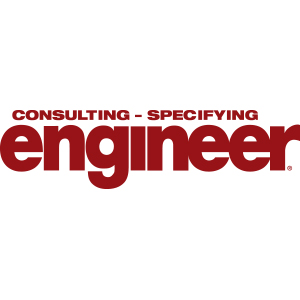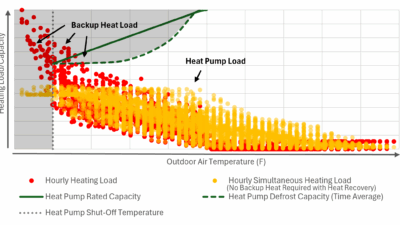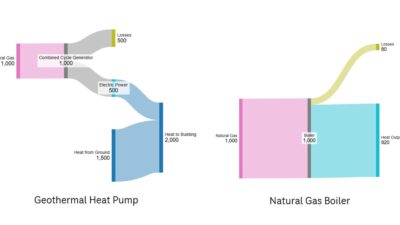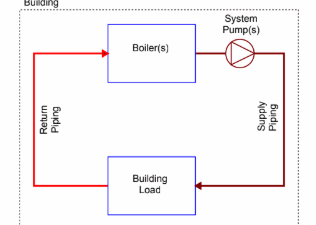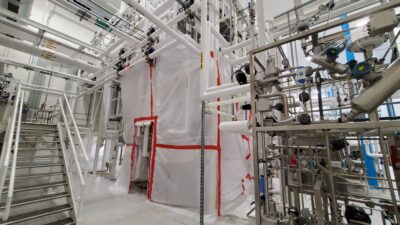Safety, budget and flexibility are key factors when designing laboratory and research space

Respondents:
- Jennifer DiMambro, CEng, MIMechE, MCIBSE, Principal/Americas Science, Industry & Technology Business Leader, Ove Arup & Partners, PC, New York City
- Adam Fry, PE, Project Manager, Associate, Mueller Associates Inc., Linthicum, Md.
- Paul Harry, PE, LEED AP, Senior Project Manager, Dewberry, Raleigh, N.C.
- Jared Machala, PE, LEED AP, Vice President, WSP, Houston
Describe a recent project with specialized fume hood requirements. How did you meet the client’s needs?
Jared Machala: We did a recent project where the owner had a fume hood face velocity requirement of 100 feet per minute. They were concerned about user safety if the face velocity was lowered to achieve energy savings. The design provided a compromise by using high performance fume hoods and setting a face velocity of 80 feet per minute. This type of fume hood can operate effectively with a 60 feet per minute face velocity and in the future as the owner becomes more comfortable with the hoods the face velocity may be reduced from the 80 feet per minute even further to achieve additional energy savings.
How have you worked with HVAC system or equipment design to increase a building’s energy efficiency?
Paul Harry: We have frequently used a modular approach to systems and equipment, increasing the quantity of components to better match load and reduce pressure drop through piping and duct distribution systems.
Energy use is also reduced by designing ductwork, piping and coils for lower pressure drop and therefore less pump and fan horsepower. Setbacks can be implemented with reduced airflows that still maintain proper pressure relationships, whether positive or negative.
Supply air temperature reset (with relative humidity override) has been used to increase economizer operating hours, reduce chilled water system energy and reduce reheat energy.
Some laboratory spaces are generally prone to a change of function over time and may not require as high of an air change rate as they once did. We are mindful of this and recommend air change rate reductions to facility managers if applicable. In one instance, a higher education research facility manager was unaware that the total building airflow could be reduced by roughly 25% due to gradually changing use over 20 years.
What best practices should be followed to ensure an efficient HVAC system is designed for this kind of building?
Paul Harry: In addition to the above items, if there are high internal cooling loads and a low hood density, water-based heat transfer systems will save energy over air systems, such as radiant heating, radiant cooling and chilled beams.
What is the most challenging thing when designing HVAC systems in such buildings?
Paul Harry: Since the HVAC systems are a significant portion of the building costs, it is important to design them accurately and efficiently. This includes right-sizing equipment, accurately defining the internal loads, fume hood needs and diversities and achieving the right balance between cost and flexibility.
What type of specialty piping, plumbing or other systems have you specified recently?
Jared Machala: The three unique specialty piping engineering systems we typically design into the high-containment laboratories are the chemical shower, breathing air and liquid effluent decontamination system. All three of these systems are required in the design of BSL-4 laboratories. The chemical shower is used to decontaminate personnel and material before existing the laboratory. The breathing air system provides air to positively pressurized suits that are used by researchers in the laboratory space. The liquid effluent decontamination system heat treats the liquid waste from the laboratory before discharge to the sanitary sewer. These systems are critical for a functioning laboratory and are designed with full redundancy in mind.
Paul Harry: We were involved recently with a renovation project for a local laboratory client to install complex automated process equipment assemblies with stringent ultrahigh purity compressed air and deionized water requirements with very little tolerance for system fluctuation. To support the equipment installations, we specified a new compressed air generation system and worked closely with the owner’s preferred vendor to coordinate the requirements of the new deionized water generation system. Both systems were specified for N+1 redundancy with automatic alternating operation as well as the capability for compressors/pumps to run simultaneously based on flow demand as an added safeguard. The existing deionized water generation system was modified to integrate into the new deionized water system to serve as an added layer of redundancy. The project also included all new distribution piping throughout the facility, final connections to all laboratory equipment and stubs for future planned lab equipment. One of the automated process equipment assemblies installed in this project required 45 separate compressed air connections.
Adam Fry: For safety and longevity, it is important to specify the correct materials for each duty. For exhaust ductwork, depending on what is being exhausted, engineering solutions may include galvanized ductwork and welded stainless steel, polypropylene ducts with flanged joints or fiberglass-reinforced plastic ducts with resin joints and seams.
It’s also important to specify the right materials. In lab buildings, even the supply side materials may vary, such as using nonferrous ductwork in imaging areas. Chemical resistance is especially important in plumbing materials that are in contact with a variety of liquid chemicals in various concentrations. Waste piping may need to be polypropylene or polyvinylidene fluoride for their chemical resistance properties. Even water piping, depending on its purity, may require similar special materials. In laboratory settings where reverse osmosis, deionized or ultrapure water is used, Mueller’s engineers specify special materials to help retain the water purity within the system and ensure the water does not degrade the piping systems. This approach may sound counterintuitive, but as water becomes more pure (fewer dissolved solids and thus higher resistivity), it can become unsafe to drink and can damage materials, especially metal piping. Moreover, material selection is very important when engineering solutions in lab buildings.
What types of unique building pressurization have you designed in labs/research facilities? Describe the project.
Jared Machala: In high-containment laboratories the building pressurization is measured against the ambient pressure to ensure that the building pressure can react to changing ambient pressures. This is accomplished by routing a pressure reference loop that samples exterior ambient conditions, which are then measured against the individual room pressures to determine the differential pressure from the room to ambient conditions. Supply and exhaust air valves are then used to make minute adjustments to room air volumes to maintain the desired differential pressure setpoints.
Adam Fry: Pressurization is an important factor in containing contaminants between clean and less-clean areas within laboratories. In a recent project, Mueller created cascading pressurization zones between levels of cleanliness, actively monitored by differential pressure transducers between the spaces, which in turn adjust the supply air to each zone, ensuring any contaminants we do have in these areas exfiltrate from clean to less-clean spaces. This concept is routinely applied in cleanrooms to push highly filtered air from clean rooms, to ante-rooms and finally to nonclean areas. This can be exactly the opposite of the pressurization strategy you employ in labs where you want negative pressurization to help keep lab contaminants from spreading out into general areas of the building.
What unique heating or cooling systems have you specified into such projects? Describe a difficult climate in which you designed an HVAC system for a laboratory or research facility project.
Jared Machala: We recently designed two laboratory projects in Amarillo, Texas where the climate is both very hot during the summer and very cold during the winter. The primary HVAC equipment was placed outside on the roof so it had to be designed with enough capacity to provide cooling during the hot summer ambient conditions and redundant freeze protection systems to ensure that the system would reliably operate during the coldest winter temperatures. The primary freeze protection system is a glycol energy recovery coil and the secondary system is a coil pump on the separate preheat coil.
What unusual or infrequently specified products or systems did you use to meet challenging heating or cooling needs? This might include active chilled beams, variable refrigerant flow, etc.
Jared Machala: This system isn’t tied to heating or cooling, but we recently specified a carbon dioxide generator for a laboratory greenhouse design. The carbon dioxide is used to boost plant growth if desired by the researchers. Safeguards had to be put in place to measure the level of carbon dioxide being produced.
